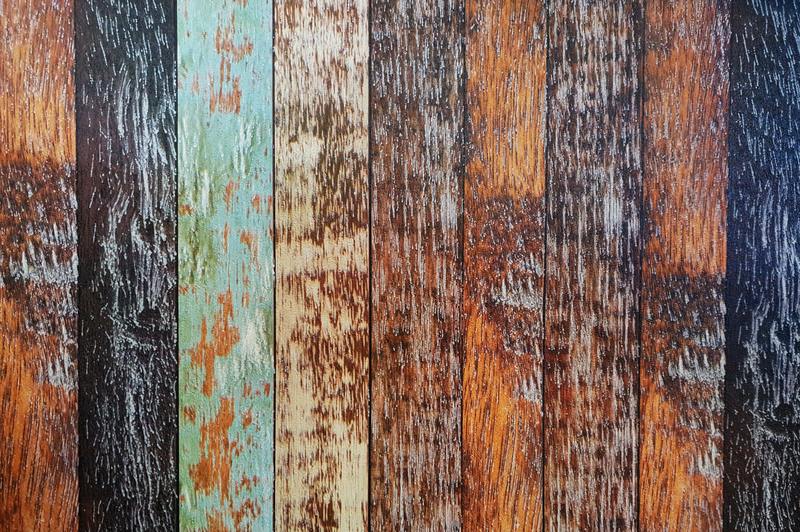Water damaged wood often has stains that ruin the wood’s appearance, and knowing how to lighten water damaged wood is something that will help you a lot. Wood stains aren’t rare to see, especially on water damaged wood. Whether it’s finished or not, water seeps inside and will cause dark colors making it look unpleasant to see.
Water stains often come as light or dark areas on the wood’s surface. White rings can mostly be seen in wood with a finish as water starts to penetrate the finish. The darker portion, however, means that the water has seeped inside the wood.

Darker stains are relatively much more complicated to get rid of than lighter ones because darker colors mean a deeper penetration of water. Knowing the four steps that you need to take will make stain removal easier.
Steps On Lightening Water Damaged Wood
Dark stains caused by water damage are unpleasant to see but don’t worry, we got your back. Here you will learn what you need to know to efficiently remove dark stains and lighten your wood surface back to the way it is. Here’s what you need to do.
Step #1. Prepare
Before you start the whole process, it is always better to prepare. Gather the materials you need and prepare your safety equipment. You will be working with chemicals here that can harm you, so it’s better to take safety precautions.
Clean out the stained area. Remove any excess water, dust, or any obstacle that may hinder you when you are working.
Step #2. Sanding
Now that you are prepared and the area is cleaned, it’s time to start the whole process. Get sandpaper or a mechanical sander and sand the stained area. When you are doing the sanding process, it’s best to follow the direction of the wood’s grain to make your work look neat.
Remove any roughness created by water damage along with the wood’s finish. Be careful not to shave off the wooden surface too much. After that, vacuum and wipe away dust and other remaining particles.
Step #3. Lighten
After sanding the stained area, you can now proceed to lighten up the wood. Wipe a bleaching agent in the stained area. Follow the steps on how to apply the bleaching agent.
You can use a sponge for large spots and a small paintbrush or cotton swap for smaller ones. If you have applied the bleaching agent and the color looks darker, repeat sanding and the bleach application again.
Remember not to shave too much wood and do not let the bleaching agent dry during repetitions. If the dark stain is completely gone, wipe the bleach with a clean damp cloth. After bleaching, allow the wood’s surface to dry for at least two days.
Step #4. Refinish
Now that your wood’s surface has been lightened, you can now apply the same original finish your wood had before. Follow the instructions on how to use your wood finish. Match the surrounding surface and let it dry for a while.
You have now completed what must be done to lighten a water damaged wood. With a little bit of practice and necessary information on the things you will use, you can be better at removing water damaged stains on any wooden surface.
Can water stains be removed from wood?
Depending on the extent and the duration of water stains, they can be removed easily or with extra steps. Stains caused by water damage can ruin the wood’s finish, surface, or even the inside. With every level of extent of damage, the removal will vary.
Water stains aren’t always permanent, it just requires knowledge and specific tools to be dealt with. It is also essential to act fast when it comes to water damage to avoid further problems from arising. After all, the earlier you act, the earlier it will be resolved.
Is it safe to bleach water damaged wood?
Bleaching agents relatively won’t cause any more damage to water damaged wood. Bleaching agents can only help lighten the wood’s surface. Aside from that, different bleaching solutions have other effects.
You must also consider the type of wood that you will be applying the bleaching agent to. Bleach solutions react differently in each kind of wood. Some woods do not take bleaching solutions really well.
You must remember to experiment first on the effect of a bleaching solution before making the application. Doing these experiments will allow you to calibrate and test to select the best bleaching agent to use. Having the necessary information for these things will do you good.
Conclusion
After completing the walkthrough tutorial, we hope that you learned how to lighten water damaged wood and utilize it when doing your restoration works. Dark and white stains caused by water damage are not rare to come across.
Whether it’s from spilled water, moisture from a cold drink, or even wet boots, water can ruin your interior look. Knowing what must be done when faced with these situations is really beneficial and would help you make things a lot easier to restore.
